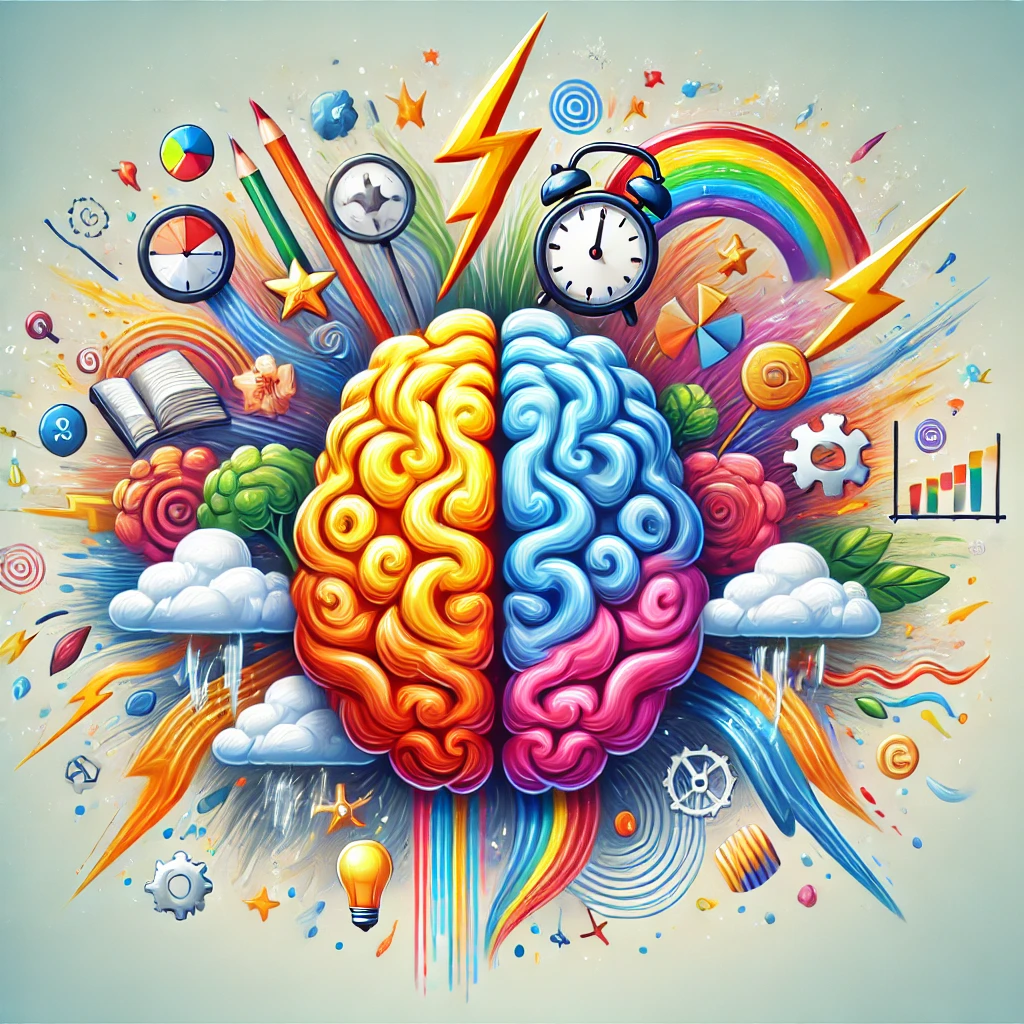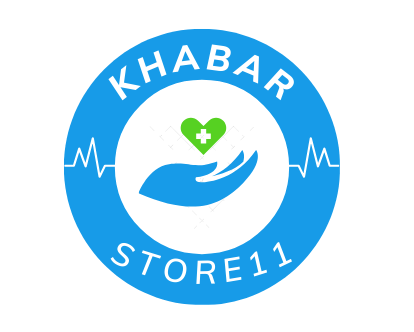How to Manage ADHD:-Attention Deficit Hyperactivity Disorder (ADHD) is a neurodevelopmental disorder commonly diagnosed in children but often persists into adulthood. Characterized by symptoms such as inattention, hyperactivity, and impulsivity, ADHD can significantly impact an individual’s daily functioning, academic performance, and social interactions. Understanding ADHD involves exploring its causes, symptoms, diagnosis, treatment options, and how individuals can manage their lives with the condition.

What is ADHD:-
ADHD is a chronic condition that affects millions of children worldwide and continues into adulthood in many cases. The primary characteristics of ADHD are difficulty maintaining attention, hyperactive behavior, and impulsiveness. These behaviors are more severe than typical developmental behavior for children, making it difficult to succeed in academic or social settings.
There are three primary types of ADHD:-
1. Predominantly Inattentive Presentation: Individuals primarily have difficulty paying attention, staying organized, and completing tasks.
2. Predominantly Hyperactive-Impulsive Presentation: Hyperactivity and impulsive behavior are more dominant, leading to problems like restlessness and interrupting others.
3. Combined Presentation: This is the most common type, where both inattentiveness and hyperactivity-impulsivity are equally present.
Causes of ADHD:-
The exact causes of ADHD are not fully understood, but researchers believe it involves a combination of genetic, environmental, and neurological factors.
1. Genetics: ADHD tends to run in families, indicating that it has a strong genetic component. Children with a parent or sibling with ADHD are more likely to develop the condition.
2. Brain Structure: Studies have shown that people with ADHD may have differences in brain structure, particularly in areas involved in attention, impulse control, and activity levels.
3. Environmental Factors: Exposure to certain environmental factors during pregnancy or early childhood, such as smoking, alcohol use, or lead exposure, may increase the risk of developing ADHD.
4. Premature Birth: Children born prematurely or with low birth weight may have a higher chance of developing ADHD.
Symptoms of ADHD:-
ADHD symptoms can vary between individuals and depend on the type of ADHD. These symptoms can be grouped into two categories: inattention and hyperactivity/impulsivity.
1. Inattention:
→ Difficulty maintaining focus on tasks or activities.
→ Frequently making careless mistakes in work or school tasks.
→ Seeming not to listen when spoken to directly.
→ Trouble organizing tasks and activities.
→ Avoidance of tasks requiring sustained mental effort.
→ Losing items necessary for tasks and activities, such as books, tools, or toys.
→ Easily distracted by unrelated stimuli.
→ Forgetfulness in daily activities.
2. Hyperactivity/Impulsivity:
→ Fidgeting or squirming in seats.
→ Difficulty remaining seated in situations where expected.
→ Running or climbing in inappropriate situations.
→ Difficulty engaging in activities quietly.
→ Talking excessively.
→ Interrupting or intruding on others’ conversations or games.
→ Impulsively answering questions before they are fully asked.
For a diagnosis, these symptoms must be present for at least six months and interfere with social, academic, or occupational activities. The symptoms must also be more severe than typically observed in individuals at a similar developmental stage.
Diagnosing ADHD:-
ADHD is diagnosed through a comprehensive evaluation by a healthcare provider. This evaluation includes a thorough history of symptoms, interviews with parents or caregivers, and direct observation of the child’s behavior. In some cases, ADHD rating scales or questionnaires may be used. There is no single test to diagnose ADHD, and the diagnosis often relies on clinical judgment based on the criteria outlined in the Diagnostic and Statistical Manual of Mental Disorders (DSM-5).
In adults, ADHD diagnosis can be more challenging since symptoms might be subtler or mistaken for other conditions like anxiety or depression. However, similar evaluation methods are used, including self-reports and interviews with family members.
Treatment Options for ADHD:-
ADHD treatment involves a combination of medication, behavioral therapy, lifestyle changes, and educational support. The treatment plan should be tailored to the individual’s specific needs and severity of symptoms.
1. Medication:
→ Stimulants: These are the most commonly prescribed medications for ADHD. They work by increasing the levels of dopamine and norepinephrine in the brain, which help improve focus and attention. Common stimulants include methylphenidate (Ritalin) and amphetamine (Adderall).
→ Non-Stimulant Medications: For those who do not respond well to stimulants or have side effects, non-stimulant medications such as atomoxetine (Strattera) or certain antidepressants may be prescribed.
2. Behavioral Therapy:
→ Behavioral interventions help manage the disruptive behaviors associated with ADHD. Cognitive Behavioral Therapy (CBT) is often used to help individuals develop skills to manage their behavior, improve organizational skills, and regulate emotions.
3. Parent Training:
→ Parent training programs can teach caregivers strategies to help their child manage ADHD symptoms at home. These programs focus on positive reinforcement, structure, and clear communication.
4. Educational Support:
→ Children with ADHD often require extra support in school. This may include special education services, individualized education plans (IEPs), or 504 plans that provide accommodations such as extra time on tests or a quieter environment for studying.
5. Lifestyle Changes:
→ Consistent routines, regular physical activity, and proper nutrition can help improve focus and manage ADHD symptoms. Techniques such as breaking tasks into smaller, manageable steps can also be beneficial for individuals with ADHD.
Living with ADHD: Coping Strategies:-
While ADHD can be challenging, individuals with the disorder can lead successful, fulfilling lives with the right support. Here are some strategies that may help:
1. Time Management: Use timers or alarms to help manage time effectively and stay on task.
2. Organization: Keeping a planner, creating to-do lists, and organizing materials can reduce forgetfulness and improve task completion.
3. Mindfulness Practices: Techniques such as mindfulness meditation can help improve focus and reduce impulsive behavior.
4. Regular Exercise: Physical activity helps improve concentration and reduce hyperactivity. Activities like yoga or martial arts may be particularly helpful.
5. Positive Reinforcement: Recognize achievements and provide rewards for completing tasks, which can motivate individuals with ADHD.
How to Manage ADHD:-
Although ADHD is most often diagnosed in children, it affects adults as well. Adult ADHD can manifest in different ways, such as difficulty maintaining jobs, disorganization, or struggling to maintain relationships. Many adults with ADHD may not have been diagnosed as children, leading to years of frustration with their inability to manage daily tasks effectively.
Symptoms in adults include:-
→ Chronic lateness and forgetfulness.
→ Anxiety and difficulty coping with stress.
→ Frequent mood swings.
→ Trouble starting and finishing tasks.
→ Relationship difficulties.
Treatment for adults often includes medications, behavioral strategies, and therapy.
READ MORE-How to improve mental health
Conclusion:-
Attention Deficit Hyperactivity Disorder is a complex condition that can significantly affect the quality of life if not properly managed. Early diagnosis, appropriate treatment, and ongoing support are critical to helping individuals with ADHD lead productive and satisfying lives. Whether through medication, therapy, or lifestyle changes, there are many strategies to effectively manage ADHD, ensuring that those affected can thrive in both personal and professional settings.
